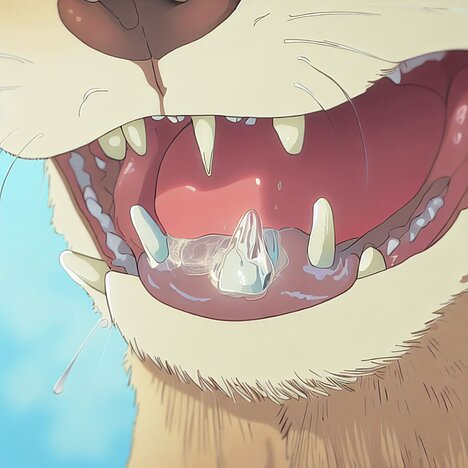Caries

Tooth decay is a disease of the teeth caused by bacteria. The enamel, the hard layer that protects the teeth, is attacked and destroyed by acid. This leads to cavities in the teeth, which cause pain and can lead to further problems such as inflammation or tooth loss.
Fortunately, tooth decay is much rarer in dogs than in humans. This is because dogs have a lower carbohydrate requirement and their teeth have a different shape and larger spaces that are less susceptible to bacteria. Nevertheless, it is possible for your dog to suffer from tooth decay, especially in the back molars, which are responsible for grinding the food.
In this article, you will learn how to recognize, treat and prevent tooth decay in your dog.
How do I recognize tooth decay in my dog?
Caries is often difficult to detect because it usually shows no visible symptoms until it is well advanced. In addition, many dogs don't like having their mouths looked at or are afraid of the vet. You should therefore check your dog's teeth regularly and look out for the following signs:
- Discoloration or stains on the teeth, especially on the chewing surfaces
- Holes or cavities in the teeth
- Fractures or cracks in the tooth enamel
- Bad breath or bad breath
- Reduced appetite or difficulty eating
- Sensitivity to touch or pain in the mouth
- Bleeding or pus on the gums
If you notice one or more of these symptoms in your dog, you should consult a veterinarian who specializes in dentistry as soon as possible. They will be able to make an accurate diagnosis and initiate the appropriate treatment.
How is tooth decay treated in dogs?
The treatment of tooth decay in dogs depends on the severity of the disease. In mild cases, the vet can close the carious areas with special filling materials to prevent further damage. This usually requires the dog to be placed under anesthesia.
In more severe cases, the vet may need to carry out root canal treatment to stop the inflammation inside the tooth. This involves removing the diseased tissue from the tooth and replacing it with a filling.
Unfortunately, in some cases it is no longer possible to save the tooth. This is the case, for example, if the decay has already penetrated too deeply into the tooth or if the tooth is already too badly damaged. The vet then has to extract the tooth to avoid further complications.
Treating tooth decay in dogs can therefore be very time-consuming and expensive. It is therefore much better if you try to prevent tooth decay in your dog.
How can I prevent tooth decay in my dog?
The best way to prevent tooth decay in dogs is to feed them a species-appropriate diet. This means feeding your dog as little sugar and grain as possible, as these substances promote the growth of bacteria. Instead, you should give your dog high-quality meat and vegetables that correspond to its natural diet.
You should also make sure that your dog chews enough. This not only helps him to digest his food better, but also to clean his teeth. This rubs off food residue and plaque from the teeth and stimulates the flow of saliva, which also rinses the teeth. You can offer your dog chewing bones, ropes or toys that he likes to chew.
You should also brush your dog's teeth regularly. It's not always easy, but it's worth it. You will need a special dog toothbrush and dog toothpaste, which you can buy in any pet shop or online. It's best to get your dog used to brushing his teeth from puppyhood and make it a positive experience for him. Reward him with praise and treats and be patient with him.
If you follow these tips, you can significantly reduce your dog's risk of tooth decay.
The authors assume that a veterinarian should be consulted if an animal is ill and that medication should only be taken after consultation with a doctor or pharmacist. Only an individual examination can lead to a diagnosis and treatment decision.
We help you find the nearest vet → This way